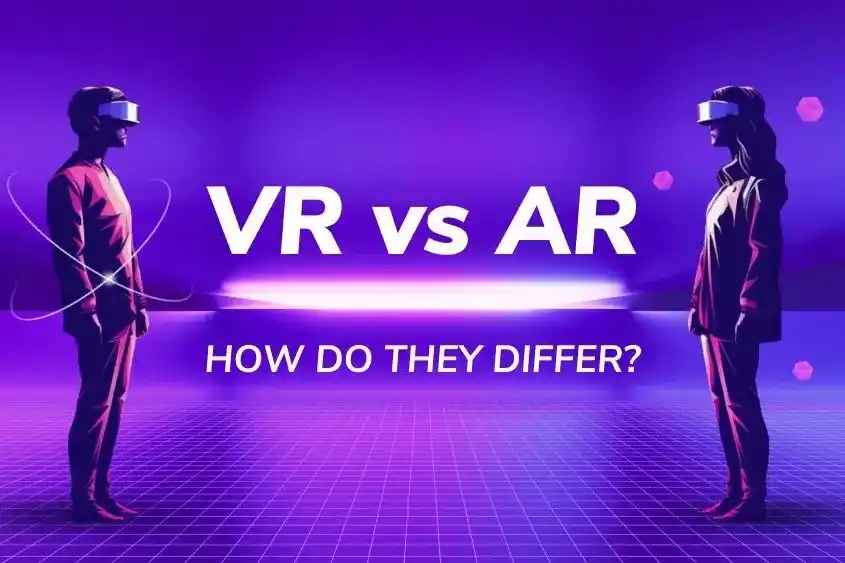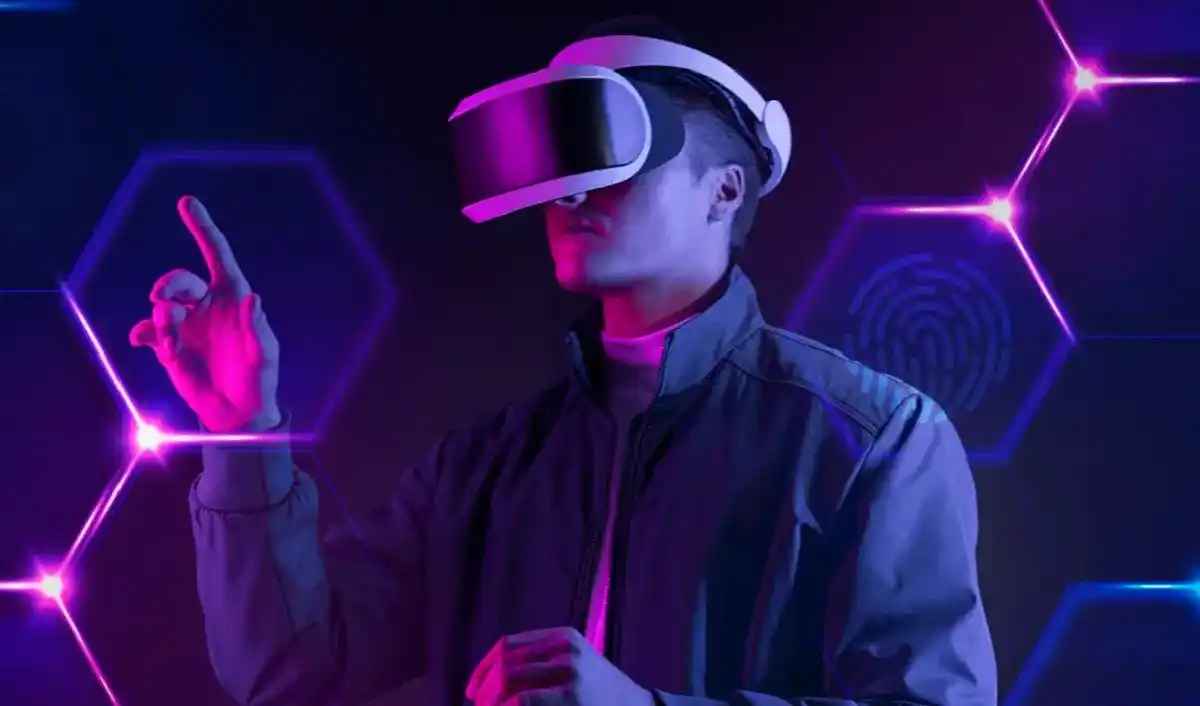Difference Between AR and VR: Key Uses & Future Trends
Updated on : 23 April, 2025

Image Source: analyticsinsight.net
Table Of Contents
- 1. Introduction
- 2. Core Technological Differences
- 3. Immersion Spectrum Analysis
- 4. Hardware Ecosystem Comparison
- 5. Software Development Paradigms
- 6. Technical Implementation Challenges
- 7. Industry-Specific Applications
- 8. Enterprise Adoption Patterns
- 9. Consumer Market Dynamics
- 10. Network and Infrastructure Requirements
- 11. Development Cost Analysis
- 12. User Experience Design Considerations
- 13. Security and Privacy Implications
- 14. Future Technological Convergence
- 15. Ethical Considerations in XR
- 16. FAQs
Table Of Contents
Introduction
Augmented Reality (AR) and Virtual Reality (VR) are transforming digital interaction paradigms. AR overlays contextual data on physical environments, while VR creates self-contained digital universes. This guide examines their technical architectures, implementation challenges, and real-world applications across industries.

Image Source: analyticsinsight.net
Core Technological Differences
Understanding the fundamental technological distinctions between AR and VR is essential. This section highlights how each technology integrates with the environment, their hardware needs, and performance characteristics.
| Aspect | Augmented Reality (AR) | Virtual Reality (VR) |
|---|---|---|
| Environment Integration | Digital overlay on physical world | Complete virtual environment |
| User Awareness | Maintains spatial awareness | Full sensory isolation |
| Hardware Requirements | Smartphones, AR glasses | VR headsets, motion controllers |
| Latency Tolerance | <20ms for seamless integration | <15ms to prevent motion sickness |
| Field of View | 30-60° typical | 100-110° for immersion |
| Power Consumption | 1-5W (mobile devices) | 10-20W (standalone VR) |
Would you like to know which industries are using AR and VR?
AR and VR are revolutionizing experiences by gamifying learning, training, and engagement like never before.
Immersion Spectrum Analysis
Immersion is a key differentiator between AR and VR. This section explores how these technologies position themselves on the immersion spectrum and the implications for user experience.
| Immersion Factor | Augmented Reality (AR) | Virtual Reality (VR) |
|---|---|---|
| Sensory Engagement | Visual and auditory overlays | Full sensory engagement including haptics |
| User Isolation | User remains aware of real world | User is isolated from physical surroundings |
| Presence | Blends real and virtual | Complete virtual presence |
| Interaction Complexity | Mixed real and digital input | Fully digital input devices |
For AR/VR Services with Hexadecimal Software
Hexadecimal Software is harnessing the power of AR and VR to redefine reality and deliver immersive, next-gen solutions across industries.
Hardware Ecosystem Comparison
Hardware defines the capabilities and limitations of AR and VR. This section compares the typical components and devices used in each technology.
AR Hardware Components
- Optical see-through displays
- Spatial computing processors
- Environmental mapping sensors
- Wearable form factors (glasses, lenses)
VR Hardware Components
- High-resolution OLED displays
- 6DOF tracking systems
- Haptic feedback devices
- Room-scale positioning systems
| Hardware Component | AR | VR |
|---|---|---|
| Display Type | Transparent waveguides, smartphone screens | Opaque OLED or LCD panels |
| Tracking | Environmental mapping, GPS, IMU | External sensors, inside-out tracking |
| Input | Touch, voice, gestures | Controllers, gloves, hand tracking |
| Form Factor | Lightweight glasses, mobile devices | Bulky headsets, tethered or standalone |
| Power Source | Battery-powered mobile devices | High-capacity batteries or tethered power |
Software Development Paradigms

Image Source: alpha3d.io
Developing for AR and VR involves distinct SDKs, rendering techniques, and input handling. This section outlines the primary software development considerations.
| Development Aspect | AR SDK Features | VR SDK Features |
|---|---|---|
| Spatial Mapping | ARKit/ARCore plane detection | SteamVR tracking systems |
| Input Handling | Gesture recognition | Controller button mapping |
| Rendering Pipeline | Real-world lighting adaptation | Dynamic global illumination |
| Performance Targets | 60 FPS with camera feed | 90 FPS for comfort |
| Debugging Tools | World tracking visualization | Frame timing analysis |

Looking to Leverage AR and VR for Smarter, Immersive Business Decisions?
Technical Implementation Challenges
Both AR and VR face unique technical hurdles. Difference Between AR and VR this section discusses common challenges such as latency, tracking accuracy, and user comfort.
| Challenge | AR | VR |
|---|---|---|
| Latency | Must be <20ms to avoid lag | Must be <15ms to prevent nausea |
| Tracking Accuracy | Environmental mapping complexity | Room-scale positional tracking |
| User Comfort | Lightweight devices preferred | Motion sickness mitigation |
| Content Synchronization | Real-time overlay alignment | Consistent frame rate and physics |
| Hardware Limitations | Battery life and processing power | Weight and heat dissipation |
Industry-Specific Applications
Difference Between AR and VR found applications across diverse sectors. This section highlights key use cases in healthcare, manufacturing, education, and entertainment.
Healthcare Implementations
| Application | AR Solution | VR Solution |
|---|---|---|
| Surgical Planning | CT scan overlay during procedures | Virtual operation simulations |
| Medical Training | Anatomy visualization on mannequins | Full emergency scenario VR |
| Patient Rehabilitation | Movement tracking overlays | Immersion therapy environments |
Industrial Use Cases
| Sector | AR Applications | VR Applications |
|---|---|---|
| Manufacturing | Equipment maintenance guides | Factory layout simulations |
| Construction | Blueprint overlays on site | Virtual walkthroughs pre-construction |
| Energy | Pipeline inspection overlays | Dangerous scenario training |
Enterprise Adoption Patterns
Enterprises adopt AR and VR differently based on ROI, scalability, and integration ease. This section analyzes adoption trends and challenges.
| Factor | AR Adoption | VR Adoption |
|---|---|---|
| Adoption Rate | High in field service & logistics | High in training & simulation |
| Integration Complexity | Moderate with existing systems | High due to hardware needs |
| Cost Efficiency | Lower upfront cost | Higher hardware and content cost |
| User Training | Minimal for AR | Extensive for VR |
Consumer Market Dynamics
Consumer acceptance and usage patterns vary widely between AR and VR. This section explores market penetration, device availability, and user preferences.
| Metric | AR | VR |
|---|---|---|
| Active Users | 1.4 billion (smartphone AR) | 25 million headset users |
| Device Cost | $200-$1500 | $300-$1500 |
| Content Availability | High via mobile apps | Growing via dedicated platforms |
| Use Cases | Social media filters, navigation | Gaming, virtual socializing |
Network and Infrastructure Requirements
Robust network infrastructure is critical for seamless AR and VR experiences. This section compares bandwidth, latency, and edge computing needs.
| Parameter | AR Systems | VR Systems |
|---|---|---|
| Bandwidth (Minimum) | 50 Mbps | 100 Mbps |
| Latency Threshold | 20ms | 15ms |
| Cloud Processing | Edge computing essential | Local rendering preferred |
| 5G Utilization | Network slicing for AR streams | MMWave for untethered VR |
Development Cost Analysis
Developing AR and VR applications involves different cost structures. This section breaks down prototyping, content creation, testing, and deployment expenses.
| Cost Factor | AR Development | VR Development |
|---|---|---|
| Prototyping | $5K-$15K | $10K-$25K |
| Content Production | $20K-$50K/hr | $50K-$100K/hr |
| QA Testing | $10K-$30K | $25K-$60K |
| Deployment | App stores, WebAR | SteamVR, Oculus Store |
User Experience Design Considerations
Designing for AR and VR requires different UX approaches to ensure usability and comfort. This section discusses interface design, interaction models, and accessibility.
| Design Aspect | AR UX | VR UX |
|---|---|---|
| Interface | Contextual overlays | Full 3D environment |
| Interaction | Touch, voice, gestures | Controllers, hand tracking |
| Accessibility | Real-world context aids | Virtual environment adaptations |
| Comfort | Lightweight, short sessions | Mitigate motion sickness |
| Feedback | Haptic, audio cues | Haptic, spatial audio |
Security and Privacy Implications
Both AR and VR bring unique security and privacy challenges. This section highlights data protection, user consent, and threat vectors.
| Security Concern | AR Considerations | VR Considerations |
|---|---|---|
| Data Collection | Environmental and location data | Biometric and behavioral data |
| User Consent | Context-aware permissions | Virtual identity management |
| Threat Vectors | Data interception, spoofing | Avatar hijacking, phishing |
| Regulatory Compliance | GDPR, CCPA | GDPR, CCPA |
Future Technological Convergence
The future points toward a merging of AR and VR into seamless XR experiences. This section explores emerging trends and technologies driving convergence.

Image Source: etedge-insights.com
Hybrid XR Solutions
- Mixed Reality (MR) interfaces combining AR and VR
- Digital twin integration for real-time simulation
- Neural interface prototypes for brain-computer interaction
- 6G network dependencies enabling ultra-low latency

Where Virtual Meets Real: Pioneering Industry Solutions with AR and VR.
Ethical Considerations in XR
As AR and VR become ubiquitous, ethical challenges arise around privacy, addiction, content moderation, and accessibility.
| Ethical Challenge | AR Considerations | VR Considerations |
|---|---|---|
| Privacy | Environmental data collection | Biometric tracking |
| Addiction | Persistent digital overlays | Escape reality mechanisms |
| Content Moderation | Context-aware filtering | Virtual world governance |
| Accessibility | Real-world dependency | Motion sickness factors |
Connect with Hexadecimal Software for AR/VR Services
Hexadecimal Software accelerates AR/VR development with powerful tools and expert solutions, crafting immersive experiences across industries. From virtual training to interactive simulations, we turn bold ideas into impactful realities.
FAQs
Q1: Can AR and VR technologies be used together?
A: Yes, Mixed Reality (MR) systems combine AR's environmental awareness with VR's immersion capabilities.
Q2: Which technology has better enterprise adoption rates?
A: AR leads in industrial applications while VR dominates training simulations.
Q3: What's the average latency tolerance difference?
A: VR requires 15ms latency vs AR's 20ms to maintain user comfort.
Q4: How do hardware costs compare?
A: Enterprise VR setups generally cost more than AR systems due to hardware complexity.
Q5: Which has higher consumer market penetration?
A: AR leads with widespread smartphone adoption, while VR has a smaller but growing headset user base.
Q6: What are the primary security concerns?
A: AR faces risks related to environmental data leakage; VR concerns focus on avatar and identity security.
Q7: Which offers better training outcomes?
A: VR excels in procedural task retention; AR is better for contextual, on-the-job learning.
Q8: How do display resolutions compare?
A: VR headsets typically offer higher resolution per eye compared to AR glasses.
Q9: What's the power consumption difference?
A: VR devices consume more power due to higher processing and display requirements.
Q10: Which has better spatial mapping accuracy?
A: AR systems generally provide more precise spatial mapping than VR room-scale tracking.
Q11: What are the main development challenges?
A: AR struggles with lighting and environment variability; VR must address motion sickness and latency.
Q12: How do update cycles differ?
A: AR apps update dynamically with environment changes; VR environments refresh at fixed frame rates.
Q13: Which offers better accessibility features?
A: AR enhances real-world context, while VR provides virtual environment adaptations for accessibility.
Q14: What's the market growth projection?
A: AR market is expected to reach $88B by 2027, outpacing VR's projected $51B growth.


